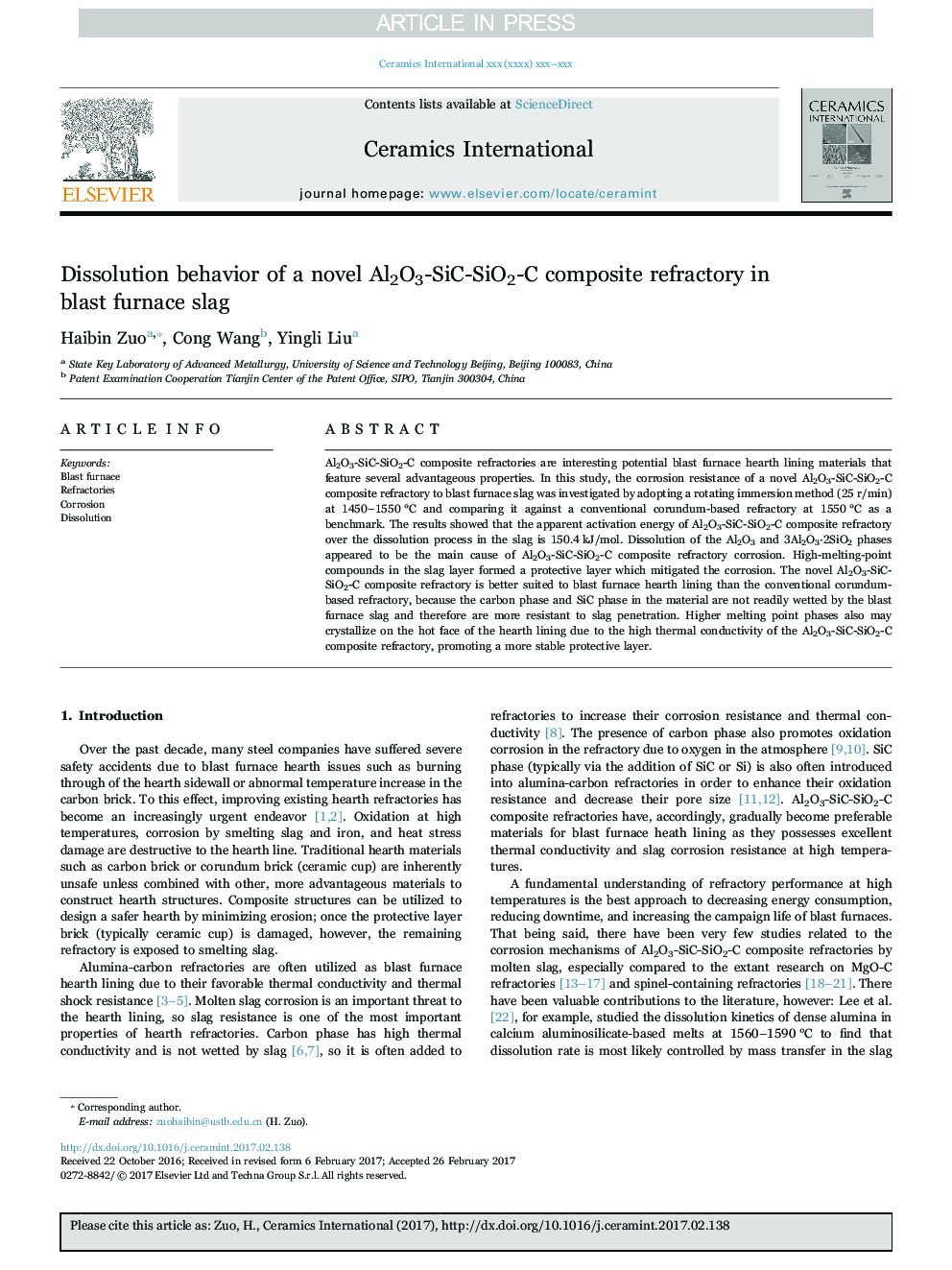| Article ID | Journal | Published Year | Pages | File Type |
|---|---|---|---|---|
| 5437954 | Ceramics International | 2017 | 8 Pages |
Abstract
Al2O3-SiC-SiO2-C composite refractories are interesting potential blast furnace hearth lining materials that feature several advantageous properties. In this study, the corrosion resistance of a novel Al2O3-SiC-SiO2-C composite refractory to blast furnace slag was investigated by adopting a rotating immersion method (25 r/min) at 1450-1550 °C and comparing it against a conventional corundum-based refractory at 1550 °C as a benchmark. The results showed that the apparent activation energy of Al2O3-SiC-SiO2-C composite refractory over the dissolution process in the slag is 150.4 kJ/mol. Dissolution of the Al2O3 and 3Al2O3·2SiO2 phases appeared to be the main cause of Al2O3-SiC-SiO2-C composite refractory corrosion. High-melting-point compounds in the slag layer formed a protective layer which mitigated the corrosion. The novel Al2O3-SiC-SiO2-C composite refractory is better suited to blast furnace hearth lining than the conventional corundum-based refractory, because the carbon phase and SiC phase in the material are not readily wetted by the blast furnace slag and therefore are more resistant to slag penetration. Higher melting point phases also may crystallize on the hot face of the hearth lining due to the high thermal conductivity of the Al2O3-SiC-SiO2-C composite refractory, promoting a more stable protective layer.
Related Topics
Physical Sciences and Engineering
Materials Science
Ceramics and Composites
Authors
Haibin Zuo, Cong Wang, Yingli Liu,
